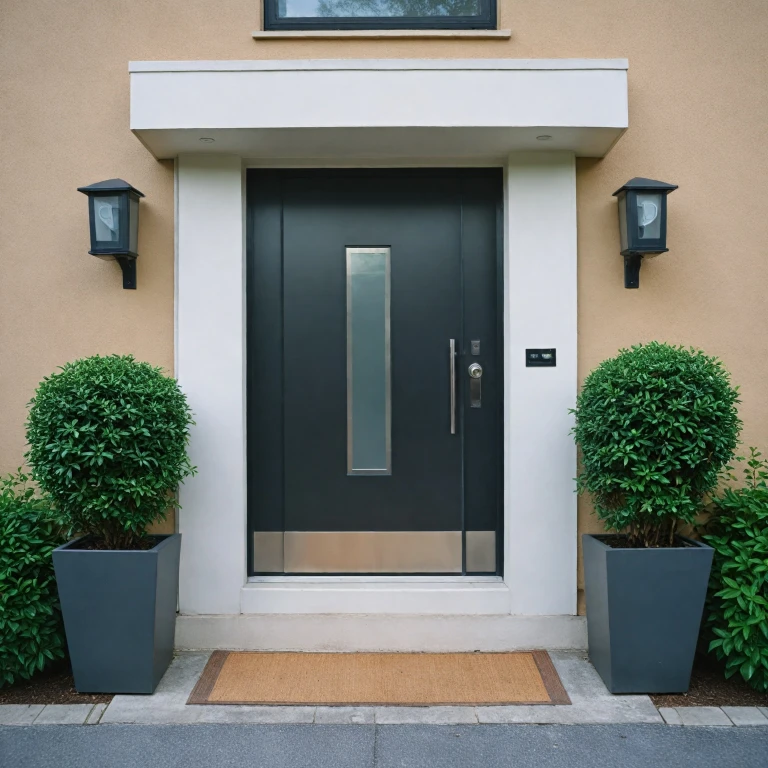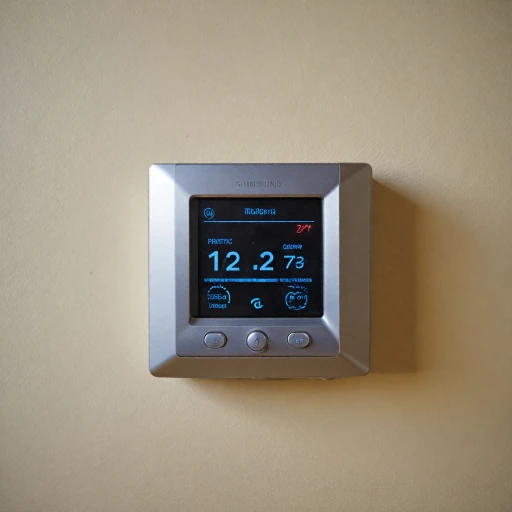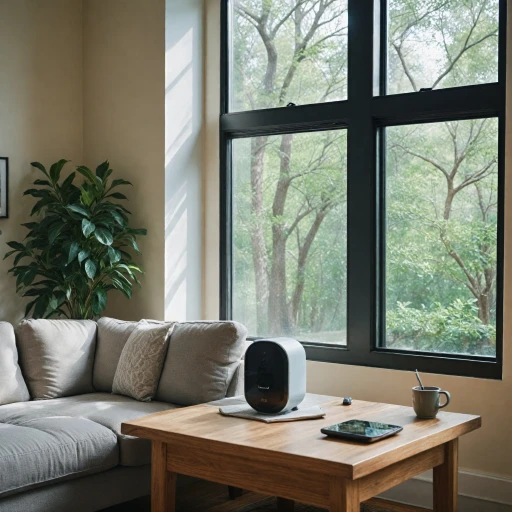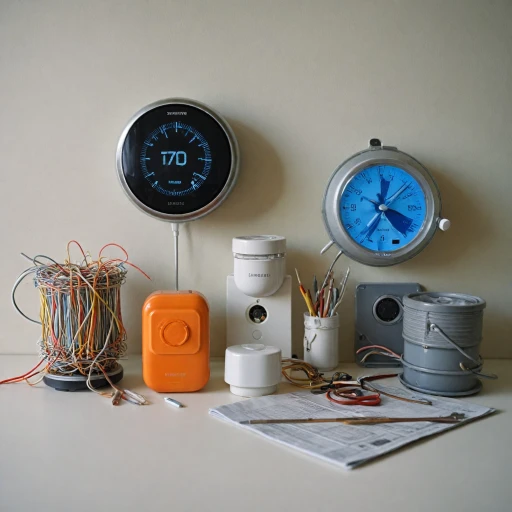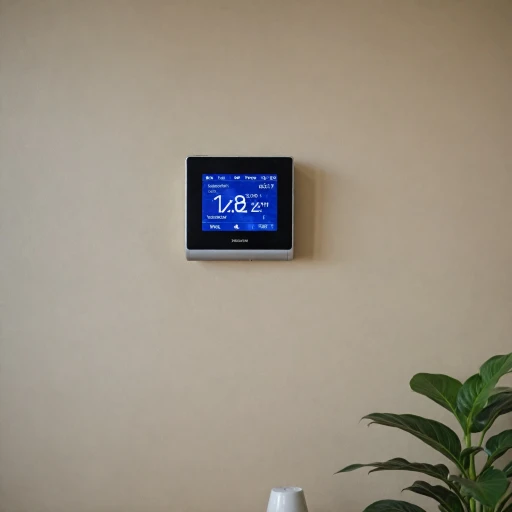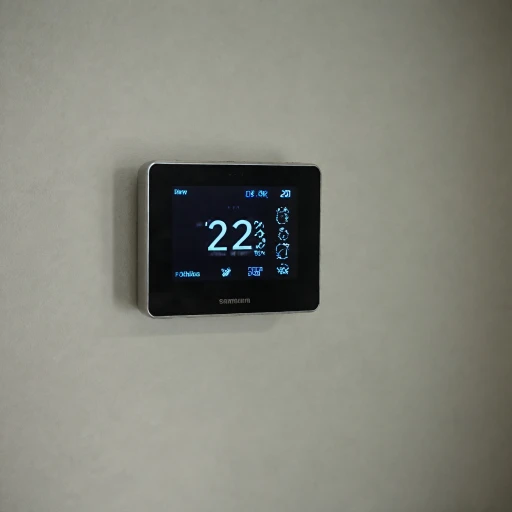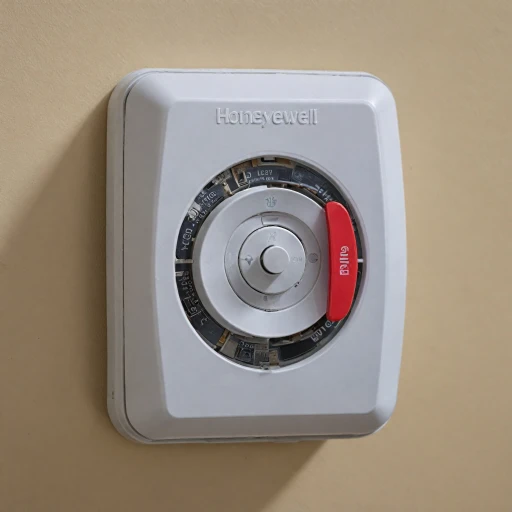
Understanding Smart Thermostats
The Rise of Smart Thermostats in Home Automation
Smart thermostats have become a pivotal element in the realm of home automation. These devices not only provide unparalleled control over your home's climate but also offer seamless integration with various smart technologies. By connecting to your smartphone or smart home system, smart thermostats allow users to tailor temperature settings from anywhere, ensuring enhanced automation capabilities.
The benefits of smart thermostats extend beyond comfort and convenience. By learning your daily routines and preferences, these devices can optimize heating and cooling cycles, leading to significant energy efficiency. This personalization is similar to mechanisms found in smart lock systems, like the Yale Assure or Kwikset SmartCode series, allowing for keyless entry or access through a fingerprint.
Furthermore, smart thermostats often include user-friendly interfaces, such as touchscreen displays reminiscent of the touchscreen deadbolt found in advanced door lock systems. These interfaces can be customized to display a range of information or adjust settings — offering an accessible experience that parallels the intuitive keypad on modern electronic deadbolts.
With an array of product options on the market, including those with satin nickel or black finishes, consumers have a wide selection from which to choose. Whether integrating a deadbolt lock for added security or seeking the right wave smart features for home efficiency, the latest in smart thermostat technology ensures that users can meet their energy and security requirements effectively.
Energy Efficiency and Cost Savings
Optimizing Energy Consumption for Tangible Savings
In today's climate-conscious world, the appeal of energy efficiency is undeniable. One of the most compelling reasons to incorporate a smart thermostat into your home is its ability to provide substantial cost savings on energy bills. This innovative product optimizes heating and cooling schedules based on your daily routine, reducing unnecessary energy consumption effectively.
Smart thermostats possess the intelligence to learn your preferences and adjust accordingly. They typically offer a series of options and requirements, allowing users to benefit from features such as keyless entry and remote access. By utilizing wave technology, these devices can align with your smart lock systems, ensuring an integrated approach to home automation. The connection to your network creates a seamless experience, especially with compatible systems like Yale and Kwikset smart locks.
Consider devices that allow you to monitor energy usage in real-time. You can conveniently identify opportunities to cut costs and enhance your home's overall energy profile. Furthermore, many of these thermostats are equipped with enhanced battery life and offer a sleek design in finishes such as satin nickel or black suede.
Brands like the Kwikset smartcode and Yale assure series offer innovative solutions that complement smart thermostats. The security aspects of these devices should not be overlooked, as they often include deadbolt locks with enhanced features like fingerprint access and electronic deadbolts.
Overall, the investment in a smart thermostat, particularly combined with allied smart devices such as a smart deadbolt lock, ensures a significant reduction in energy consumption and an improvement in security measures. This synergy results in potential savings that can justify the initial outlay and provide peace of mind.
Integration with Smart Home Systems
Seamless Smart Home Integration
A pivotal aspect of modern smart thermostats is their ability to integrate smoothly with various smart home systems. With the rise of home automation, these devices have become a cornerstone, connecting effortlessly with technologies like Z-Wave, creating a unified smart experience. Z-Wave, renowned for its widespread compatibility, offers a series of smart locks and other devices, ensuring that your entire home ecosystem works harmoniously. Many smart thermostats now extend compatibility to include products such as the Yale Assure and Kwikset SmartCode series, allowing them to coordinate with door locks and security systems to optimize home entry and security processes. When a smart lock is installed, like the electronic deadbolt or a touchscreen deadbolt with wave smart capabilities, your thermostat can seamlessly adjust settings when the lock is activated, increasing energy efficiency and security. The interconnectivity doesn't end with energy management. By understanding temperature sensors, your smart thermostat can sync better with these locks, offering enhanced convenience and user-friendly experiences. Battery life, too, is crucial and is addressed with optimized settings, ensuring that devices like the smart lock and deadbolt lock maintain their functionality without frequent maintenance. The interplay between smart locks with various series, including options such as lock keyless and keypad access, adds an extra layer of security to smart home systems. As you explore integration options, consider the requirements and benefits of choosing a lock system compatible with your thermostat's technology. With more offerings becoming available in satin nickel, black suede, and other aesthetic options, homeowners can maintain their desired look while enhancing the functionality of their home. For more insight into integrating smart home technologies such as motion sensors, visit our detailed guide here.User Experience and Accessibility
Ease of Use and Accessibility: Making Smart Thermostats User-Friendly
Smart thermostats are designed with user experience in mind, offering intuitive interfaces and features that make temperature control both convenient and accessible. With advancements in touchscreen technology, smart thermostats have transformed the way users interact with their home heating and cooling systems. These devices often come with user-friendly controls similar to those found on electronic deadbolts and smart lock systems such as the Kwikset SmartCode or Yale Assure. One of the key features enhancing user experience is the ability to control the thermostat remotely via a smartphone app. This function mirrors the convenience provided by smart lock systems, allowing homeowners to manage their home environment with just a few taps, no matter their location. Such seamless integration simplifies access, much like the keyless entry systems offered by products such as the Kwikset and Yale smart locks. Moreover, smart thermostats are designed to cater to diverse accessibility needs. Their interfaces offer clear displays and options for voice control, aiding users who may have visual or mobility challenges. For instance, designing with simplicity in mind is similar to the touchscreen keypads and fingerprint proof finishes found on popular lock products. In addition to ease of use, battery life is a significant consideration for both smart thermostats and smart locks. Just as you would ensure your electronic deadbolt or series wave black suede lock remains powered, understanding the energy requirements of your smart thermostat can save you time and inconvenience. Ultimately, the goal of a smart thermostat—like any smart home device—is to enhance the user's interaction with their home. By focusing on ease of use and accessibility, these devices contribute positively to the overall smart home ecosystem, offering sophistication similar to high-tech lock options like the satin nickel finishes typically seen on Yale or Kwikset products.Security Concerns and Solutions
Addressing Privacy and Security in Smart Thermostats
Ensuring the security of your smart thermostat is a crucial aspect to consider, especially when it integrates with other smart home systems. One primary concern is unauthorized access. Many homeowners worry about the potential for hackers to infiltrate their system.- Encryption and Secure Connections: It's vital that smart thermostats employ strong encryption protocols to protect data transmission between the thermostat and your smartphone or home network. Just like how a smart lock such as the Yale Assure or Kwikset SmartCode series ensures secure entry management, a smart thermostat must safeguard your home's heating and cooling settings.
- Authentication Features: As with electronic deadbolts that offer keyless access, smart thermostats can benefit from multi-factor authentication methods. This could mean requiring a password and an additional code sent to your smartphone to make changes, thereby enhancing security against unauthorized changes, much like a door lock with a keypad.
- Regular Updates: To keep security measures robust, manufacturers need to provide regular firmware updates. This is similar to how the latest series wave of smart locks constantly evolves to counteract potential vulnerabilities.
- Battery Management: Security isn’t just about protecting against external threats. It’s also about ensuring your devices are always operational. Just as a smart lock might notify you of low battery life, smart thermostats should enable alerts for maintenance needs, ensuring that your system remains functional and secure at all times.
